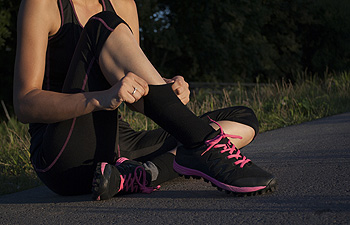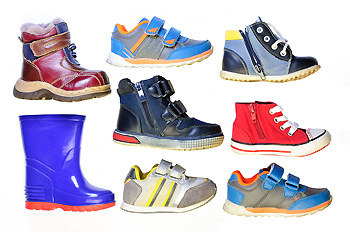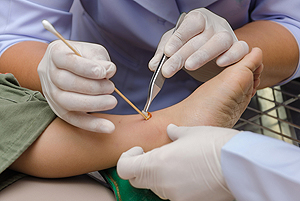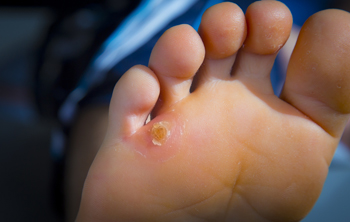Connect With Us
Blog
Items filtered by date: August 2020
When Should I Replace My Running Shoes?
 Whether you’re just starting out or are an experienced runner, it is important that you have the proper footwear for the style of running that you enjoy. Most running shoes can last about 400 miles, however if you’re running on rugged, uneven, or rough terrain, it is possible that they may experience wear and tear earlier on. Your particular type of running stride can also play a role in wearing down your running shoes. Tracking your miles while you run, and inspecting the state of your shoes before starting your activity, can help you to recognize if your shoes need to be replaced. You may also notice your knees and feet may ache after a run if your shoes are too used, and the support they once gave is now lacking. For more advice on caring for your running shoes and knowing when to replace them, please speak with a podiatrist.
Whether you’re just starting out or are an experienced runner, it is important that you have the proper footwear for the style of running that you enjoy. Most running shoes can last about 400 miles, however if you’re running on rugged, uneven, or rough terrain, it is possible that they may experience wear and tear earlier on. Your particular type of running stride can also play a role in wearing down your running shoes. Tracking your miles while you run, and inspecting the state of your shoes before starting your activity, can help you to recognize if your shoes need to be replaced. You may also notice your knees and feet may ache after a run if your shoes are too used, and the support they once gave is now lacking. For more advice on caring for your running shoes and knowing when to replace them, please speak with a podiatrist.
If you are a runner, wearing the right running shoe is essential. For more information, contact one of our podiatrists from Family Foot and Ankle Care of Moriches. Our doctors can provide the care you need to keep you pain-free and on your feet.
Choosing the Right Running Shoe for Your Foot Type
To increase performance and avoid the risk of injury, it is important to choose the right running shoe based on your foot type. The general design of running shoes revolves around pronation, which is how the ankle rolls from outside to inside when the foot strikes the ground.
- Neutral runners are able to choose from a wide variety of shoes, including minimalist shoes or even going barefoot.
- Runners who overpronate, or experience an over-abundance of ankle rolling, should choose shoes that provide extra motion control and stability.
- Runners who underpronate, or supinate, have feet that have high arches and lack flexibility, preventing shock absorption. They require shoes with more flexibility and cushion.
If you have any questions please feel free to contact our offices located in Moriches and Shirley, NY . We offer the newest diagnostic and treatment technologies for all your foot and ankle needs.
Finding the Right Shoes for Your Child
 With how quickly children's feet tend to grow, shoe shopping for your little one can be a challenge. When purchasing shoes for your child, the first thing you will want to do is make sure that they are the right size! Children’s feet grow and change rapidly, so it is suggested that you take your child to the shoe store for a professional shoe fitting at least once per year rather than shopping online. A shoe store employee can also recommend shoe brands that will best fit your child’s feet specific to their needs. You will want to pick out shoes that are comfortable and supportive, and that leave wiggle room for their toes. For more information on finding proper-fitting shoes for your child, consult with a podiatrist.
With how quickly children's feet tend to grow, shoe shopping for your little one can be a challenge. When purchasing shoes for your child, the first thing you will want to do is make sure that they are the right size! Children’s feet grow and change rapidly, so it is suggested that you take your child to the shoe store for a professional shoe fitting at least once per year rather than shopping online. A shoe store employee can also recommend shoe brands that will best fit your child’s feet specific to their needs. You will want to pick out shoes that are comfortable and supportive, and that leave wiggle room for their toes. For more information on finding proper-fitting shoes for your child, consult with a podiatrist.
It is important to find shoes that fit you properly in order to avoid a variety of different foot problems. For more information about treatment, contact one of our podiatrists from Family Foot and Ankle Care of Moriches. Our doctors will treat your foot and ankle needs.
Proper Shoe Fitting
Shoes have many different functions. They cushion our body weight, protect our feet, and allow us to safely play sports. You should always make sure that the shoes you wear fit you properly in order to avoid injuries and deformities such as: bunions, corns, calluses, hammertoes, plantar fasciitis, stress fractures, and more. It is important to note that although a certain pair of shoes might be a great fit for someone else, that doesn’t mean they will be a great fit for you. This is why you should always try on shoes before buying them to make sure they are worth the investment. Typically, shoes need to be replaced ever six months to one year of regular use.
Tips for Proper Shoe Fitting
- Select a shoe that is shaped like your foot
- Don’t buy shoes that fit too tight, expecting them to stretch to fit
- Make sure there is enough space (3/8” to ½”) for your longest toe at the end of each shoe when you are standing up
- Walk in the shoes to make sure they fit and feel right
- Don’t select shoes by the size marked inside the shoe, but by how the shoe fits your foot
The shoes you buy should always feel as good as they look. Shoes that fit properly will last longer, feel better, and improve your way of life each day.
If you have any questions, please feel free to contact our offices located in Moriches and Shirley, NY . We offer the newest diagnostic and treatment technologies for all your foot care needs.
Debridement May Help Foot Ulcers Heal
 Diabetic patients are prone to getting cuts, bruises, and wounds on their feet, which can be difficult to heal. This is a result of elevated glucose levels that can cause the feet to lose sensation. Minor cuts, if left unnoticed and untreated can develop into foot ulcers. Untreated wounds may also lead to possible amputation, and research has indicated that this is responsible for two hundred amputations per day. Proper wound treatment can begin with a process that is referred to as debridement. This is typically effective in removing dead skin from the feet. This procedure provides clean edges surrounding the foot ulcer, and healthy tissue can grow, which may accelerate the healing process. If you have developed wounds on the feet, it is strongly recommended that you are under the care of a podiatrist who can help you to manage diabetic foot conditions.
Diabetic patients are prone to getting cuts, bruises, and wounds on their feet, which can be difficult to heal. This is a result of elevated glucose levels that can cause the feet to lose sensation. Minor cuts, if left unnoticed and untreated can develop into foot ulcers. Untreated wounds may also lead to possible amputation, and research has indicated that this is responsible for two hundred amputations per day. Proper wound treatment can begin with a process that is referred to as debridement. This is typically effective in removing dead skin from the feet. This procedure provides clean edges surrounding the foot ulcer, and healthy tissue can grow, which may accelerate the healing process. If you have developed wounds on the feet, it is strongly recommended that you are under the care of a podiatrist who can help you to manage diabetic foot conditions.
Wound care is an important part in dealing with diabetes. If you have diabetes and a foot wound or would like more information about wound care for diabetics, consult with one of our podiatrists from Family Foot and Ankle Care of Moriches. Our doctors will assess your condition and provide you with quality foot and ankle treatment.
What Is Wound Care?
Wound care is the practice of taking proper care of a wound. This can range from the smallest to the largest of wounds. While everyone can benefit from proper wound care, it is much more important for diabetics. Diabetics often suffer from poor blood circulation which causes wounds to heal much slower than they would in a non-diabetic.
What Is the Importance of Wound Care?
While it may not seem apparent with small ulcers on the foot, for diabetics, any size ulcer can become infected. Diabetics often also suffer from neuropathy, or nerve loss. This means they might not even feel when they have an ulcer on their foot. If the wound becomes severely infected, amputation may be necessary. Therefore, it is of the upmost importance to properly care for any and all foot wounds.
How to Care for Wounds
The best way to care for foot wounds is to prevent them. For diabetics, this means daily inspections of the feet for any signs of abnormalities or ulcers. It is also recommended to see a podiatrist several times a year for a foot inspection. If you do have an ulcer, run the wound under water to clear dirt from the wound; then apply antibiotic ointment to the wound and cover with a bandage. Bandages should be changed daily and keeping pressure off the wound is smart. It is advised to see a podiatrist, who can keep an eye on it.
If you have any questions, please feel free to contact our offices located in Moriches and Shirley, NY . We offer the newest diagnostic and treatment technologies for all your foot care needs.
Why Does My Ankle Hurt?
 Ankle pain can have a variety of causes. One of the most common causes of ankle pain is injury from physical activity. Sprains and fractures can occur while exercising, playing a sport, or even walking if the ankle is rolled, turned or twisted awkwardly. Another common cause of ankle pain is osteoarthritis. Osteoarthritis is the type of arthritis usually associated with aging and wears away the cartilage on the ends of your bones and leads to joint damage and pain. Wearing shoes with inadequate support or a poor fit, standing or walking for prolonged periods of time, exercising excessively, or being overweight can result in ankle pain as well. If you are experiencing persistent ankle pain, it is recommended that you consult with a podiatrist.
Ankle pain can have a variety of causes. One of the most common causes of ankle pain is injury from physical activity. Sprains and fractures can occur while exercising, playing a sport, or even walking if the ankle is rolled, turned or twisted awkwardly. Another common cause of ankle pain is osteoarthritis. Osteoarthritis is the type of arthritis usually associated with aging and wears away the cartilage on the ends of your bones and leads to joint damage and pain. Wearing shoes with inadequate support or a poor fit, standing or walking for prolonged periods of time, exercising excessively, or being overweight can result in ankle pain as well. If you are experiencing persistent ankle pain, it is recommended that you consult with a podiatrist.
Ankle pain can be caused by a number of problems and may be potentially serious. If you have ankle pain, consult with one of our podiatrists from Family Foot and Ankle Care of Moriches. Our doctors will assess your condition and provide you with quality foot and ankle treatment.
Ankle pain is any condition that causes pain in the ankle. Due to the fact that the ankle consists of tendons, muscles, bones, and ligaments, ankle pain can come from a number of different conditions.
Causes
The most common causes of ankle pain include:
- Types of arthritis (rheumatoid, osteoarthritis, and gout)
- Ankle sprains
- Broken ankles
- Achilles tendinitis
- Achilles tendon rupture
- Stress fractures
- Bursitis
- Tarsal tunnel syndrome
- Plantar fasciitis
Symptoms
Symptoms of ankle injury vary based upon the condition. Pain may include general pain and discomfort, swelling, aching, redness, bruising, burning or stabbing sensations, and/or loss of sensation.
Diagnosis
Due to the wide variety of potential causes of ankle pain, podiatrists will utilize a number of different methods to properly diagnose ankle pain. This can include asking for personal and family medical histories and of any recent injuries. Further diagnosis may include sensation tests, a physical examination, and potentially x-rays or other imaging tests.
Treatment
Just as the range of causes varies widely, so do treatments. Some more common treatments are rest, ice packs, keeping pressure off the foot, orthotics and braces, medication for inflammation and pain, and surgery.
If you have any questions, please feel free to contact our offices located in Moriches and Shirley, NY . We offer the newest diagnostic and treatment technologies for all your foot care needs.
Wounds That Don't Heal Need to Be Checked
Where Do Corns Develop?
 A corn on the foot is defined as a small area on the top of the toes or on the sole of the foot that has hardened as a result of excess pressure that is often caused by wearing shoes that do not fit correctly. It can cause severe pain and discomfort, and may feel better when a protective covering is worn over it. Additionally, corns may develop between the toes, and these are referred to as soft corns. The corn and surrounding area may feel better when it is soaked in warm water, and it is beneficial to wear shoes that are comfortable and fit properly. If you have developed corns on your feet, please consult with a podiatrist who can guide you toward treatment techniques that are correct for you.
A corn on the foot is defined as a small area on the top of the toes or on the sole of the foot that has hardened as a result of excess pressure that is often caused by wearing shoes that do not fit correctly. It can cause severe pain and discomfort, and may feel better when a protective covering is worn over it. Additionally, corns may develop between the toes, and these are referred to as soft corns. The corn and surrounding area may feel better when it is soaked in warm water, and it is beneficial to wear shoes that are comfortable and fit properly. If you have developed corns on your feet, please consult with a podiatrist who can guide you toward treatment techniques that are correct for you.
Corns can make walking very painful and should be treated immediately. If you have questions regarding your feet and ankles, contact one of our podiatrists of Family Foot and Ankle Care of Moriches. Our doctors will treat your foot and ankle needs.
Corns: What Are They? And How Do You Get Rid of Them?
Corns are thickened areas on the skin that can become painful. They are caused by excessive pressure and friction on the skin. Corns press into the deeper layers of the skin and are usually round in shape.
Ways to Prevent Corns
There are many ways to get rid of painful corns such as:
- Wearing properly fitting shoes that have been measured by a professional
- Wearing shoes that are not sharply pointed or have high heels
- Wearing only shoes that offer support
Treating Corns
Although most corns slowly disappear when the friction or pressure stops, this isn’t always the case. Consult with your podiatrist to determine the best treatment option for your case of corns.
If you have any questions please feel free to contact our offices located in Moriches and Shirley, NY . We offer the newest diagnostic and treatment technologies for all your foot and ankle needs.
Blog Archives
- March 2025
- February 2025
- January 2025
- December 2024
- November 2024
- October 2024
- September 2024
- August 2024
- July 2024
- June 2024
- May 2024
- April 2024
- March 2024
- February 2024
- January 2024
- December 2023
- November 2023
- October 2023
- September 2023
- August 2023
- July 2023
- June 2023
- May 2023
- April 2023
- March 2023
- February 2023
- January 2023
- December 2022
- November 2022
- October 2022
- September 2022
- August 2022
- July 2022
- June 2022
- May 2022
- April 2022
- March 2022
- February 2022
- January 2022
- December 2021
- November 2021
- October 2021
- September 2021
- August 2021
- July 2021
- June 2021
- May 2021
- April 2021
- March 2021
- February 2021
- January 2021
- December 2020
- November 2020
- October 2020
- September 2020
- August 2020
- July 2020
- June 2020
- May 2020
- April 2020
- March 2020
- February 2020
- January 2020
- December 2019
- November 2019
- October 2019
- September 2019
- August 2019
- July 2019
- June 2019
- May 2019
- April 2019
- March 2019
- February 2019
- January 2019
- December 2018
- November 2018
- October 2018
- September 2018
- August 2018
- July 2018
- June 2018
- May 2018
- April 2018
- March 2018
- February 2018
- January 2018
- December 2017
- November 2017
- October 2017
- September 2017
- August 2017
- July 2017
- June 2017
- May 2017
- April 2017
- March 2017
- February 2017
- January 2017
- December 2016
- November 2016
- October 2016
- September 2016
- August 2016
- July 2016
- June 2016
- October 2015
- September 2015
- August 2015
- July 2015
- June 2015
- May 2015
- April 2015




